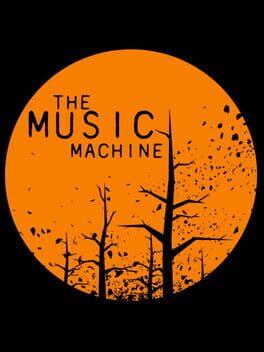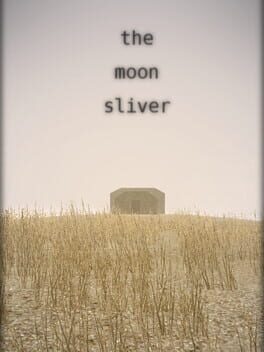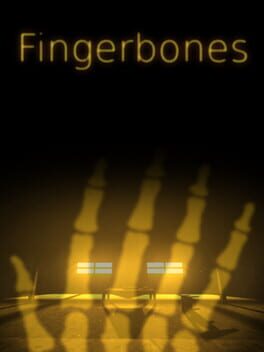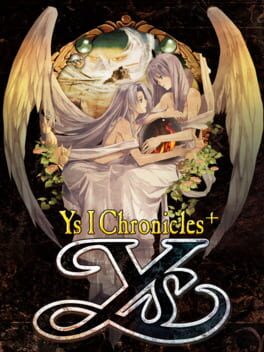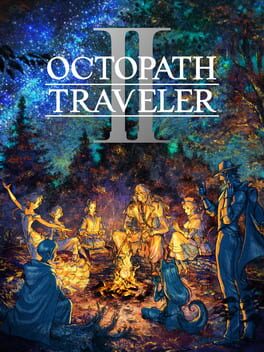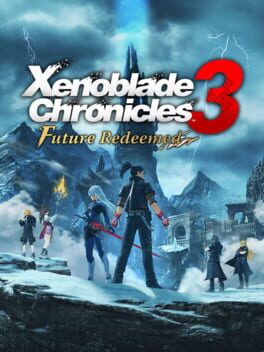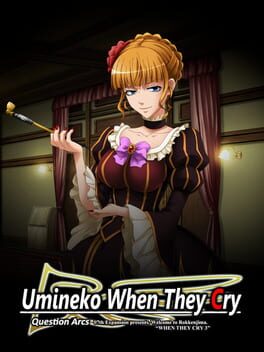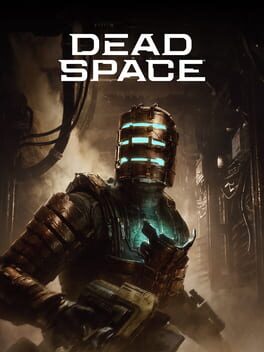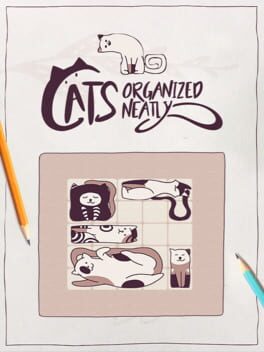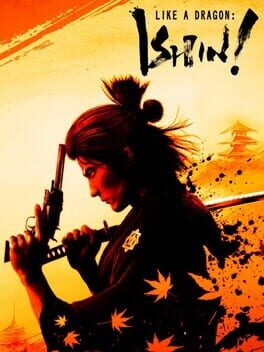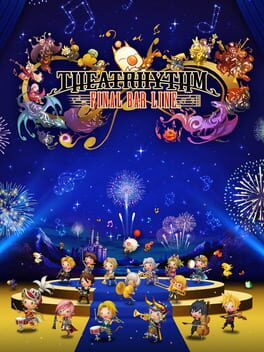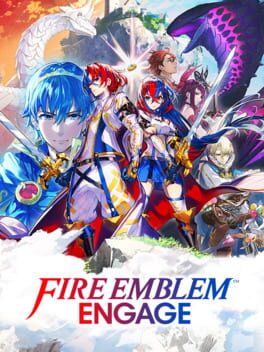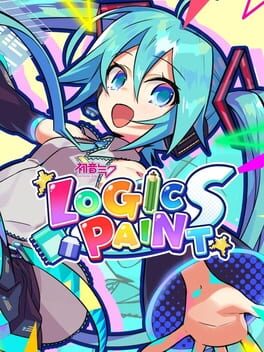VideoGameTim
BACKER
2015
Certainly my favourite of Szymanski's earlier works so far. Gorgeous visual style, while telling simultaneously a more direct narrative with more abstract themes/lore. Maybe a bit less meaningful in this way to me, but it was a nice excuse to explore a more varied collection of levels. Still, very cool.
2014
While I appreciate what he was going for with this one in terms of themes, it fell a little bit short of the mark. Even only being ~30 minutes, it felt a little bit plodding. Having the narrative text appear on screen as you walk around was a decent idea to keep players moving, but ultimately it meant there were sections where I still had to stop walking to read, or move away to make text disappear so I could read other text. In the end, notes probably would've worked better (especially considering the story).
On top of that, there were also a couple of key moments where I felt the narrative was telling, rather than showing. It would've been a lot more effective to hear sounds, rather than read about sounds for example. Still, I didn't totally hate it - it was more on the execution than the story itself.
On top of that, there were also a couple of key moments where I felt the narrative was telling, rather than showing. It would've been a lot more effective to hear sounds, rather than read about sounds for example. Still, I didn't totally hate it - it was more on the execution than the story itself.
2014
2013
Though I can't say I fully appreciate the true extent of this remake of the original 1987 title, it still holds up pretty well as the beginning of the long running series.
A rather short game (it ran me 5-6 hours), Ys I is an adventure where the main character Adol runs around fighting monsters and learns about this new land he has shipwrecked on. The combat system is a bit different than most classic RPGs where it a top-down action game that makes use of the 'Bump' system. Ideally, you try to run into enemies at an angle. This allows you to do the most damage while also avoiding the damage of a head on collision. It works pretty well, and the handful of boss fights all have their own strategies.
This release also offers a toggle between three different arrangements of the soundtrack - the original PC-98, the Complete, and the Chronicles+. While all three are pretty good, the high-quality, intense guitar soundtrack of Chronicles+ is absolutely incredible and really elevates the experience.
This is a great entry to this series and I am looking forward to continue on to the rest of them. As I mentioned before, it's really not too long so give it a go if you want to try out what an action RPG that predates even Final Fantasy feels like! Just one word of advice, if you are playing on PC ensure the refresh rate is set to 60. You will thank me by the end for not having it set to 144Hz - I found out the hard way!
A rather short game (it ran me 5-6 hours), Ys I is an adventure where the main character Adol runs around fighting monsters and learns about this new land he has shipwrecked on. The combat system is a bit different than most classic RPGs where it a top-down action game that makes use of the 'Bump' system. Ideally, you try to run into enemies at an angle. This allows you to do the most damage while also avoiding the damage of a head on collision. It works pretty well, and the handful of boss fights all have their own strategies.
This release also offers a toggle between three different arrangements of the soundtrack - the original PC-98, the Complete, and the Chronicles+. While all three are pretty good, the high-quality, intense guitar soundtrack of Chronicles+ is absolutely incredible and really elevates the experience.
This is a great entry to this series and I am looking forward to continue on to the rest of them. As I mentioned before, it's really not too long so give it a go if you want to try out what an action RPG that predates even Final Fantasy feels like! Just one word of advice, if you are playing on PC ensure the refresh rate is set to 60. You will thank me by the end for not having it set to 144Hz - I found out the hard way!
2023
While the first Octopath Traveler wasn't perfect, I thought it was a wonderful little game. The introduction of the HD-2D style, 8 little contained stories with a couple of memorable characters, a good soundtrack, and a fairly satisfying turn-based combat system. Octopath Traveler 2 improves vastly upon its predecessor in every conceivable way.
The game takes place in Solistia, a country split across two continents. Similar to the first game, you pick a starting character to serve as your MC, and wander around the world picking up your other party members and experiencing their stories. The major criticism that many people levied against the first game was the lack of party interaction. There were brief little scenes you could see if you went out of your way to watch them at taverns, but they didn't really feel connected to each other for 99% of the game. In OT2, most major story beats will have a set of banter scenes you can view depending who is in your party (and all of them are available to watch through the menu). During battle, when a party member breaks an enemy, there is also a high chance that the next party member up to attack will directly compliment them for it. Additionally, there are four pairings of the main characters who have their own little side stories together. These extra little scenes, interactions, and scenarios really help the party feel closer to each other.
From a gameplay perspective, the major new addition is the day/night system. Different enemies, different party effects, different NPCs, and even different music(!) take effect depending on the time of day, and this is brilliantly tied to the push of a button so you can freely toggle it at any time. The combat is largely the same as in the first game, complete with a job system to mix and match to your preferences. There are some other pleasant surprises too that you will come across during your travels from dungeons, to job guilds, to COUNTLESS major cities and towns that truly reward your exploration.
One other key bit of gameplay that I'd like to touch on is the design of the side quests. Each NPC that has a side quest is marked on your map, however no markers are made as to the objectives themselves. The player must use the quest givers descriptions, or often context given by nearby NPCs for hints on where you can go to complete it. While a handful of them were obtuse enough that I looked up a guide, I ended up actually taking notes to remember who wanted what and where I could potentially find it. It was honestly refreshing to have a reason to do something like that again, which made me want to complete as many of them as I could.
This game also features yet another incredible OST and since every area features a day/night version of each song, I have no doubt it's their longest. One final improvement over the original I would like to highlight is the characters. Each and every one of them is memorable and goes through a unique and fairly developed story with different stakes. They are all special in their own way, and even the one I felt goes a little too far off the deep end still ends up being really cool and memorable in its own way.
For fans of the turn-based genre, Octopath Traveler 2 is absolutely worth your time. I only left a couple of major things left undone, but my final playtime clocked in around 75 hours so there is a LOT of meat to the game. I hope they get to keep making these and maybe shake things up again in an OT3 down the road.
The game takes place in Solistia, a country split across two continents. Similar to the first game, you pick a starting character to serve as your MC, and wander around the world picking up your other party members and experiencing their stories. The major criticism that many people levied against the first game was the lack of party interaction. There were brief little scenes you could see if you went out of your way to watch them at taverns, but they didn't really feel connected to each other for 99% of the game. In OT2, most major story beats will have a set of banter scenes you can view depending who is in your party (and all of them are available to watch through the menu). During battle, when a party member breaks an enemy, there is also a high chance that the next party member up to attack will directly compliment them for it. Additionally, there are four pairings of the main characters who have their own little side stories together. These extra little scenes, interactions, and scenarios really help the party feel closer to each other.
From a gameplay perspective, the major new addition is the day/night system. Different enemies, different party effects, different NPCs, and even different music(!) take effect depending on the time of day, and this is brilliantly tied to the push of a button so you can freely toggle it at any time. The combat is largely the same as in the first game, complete with a job system to mix and match to your preferences. There are some other pleasant surprises too that you will come across during your travels from dungeons, to job guilds, to COUNTLESS major cities and towns that truly reward your exploration.
One other key bit of gameplay that I'd like to touch on is the design of the side quests. Each NPC that has a side quest is marked on your map, however no markers are made as to the objectives themselves. The player must use the quest givers descriptions, or often context given by nearby NPCs for hints on where you can go to complete it. While a handful of them were obtuse enough that I looked up a guide, I ended up actually taking notes to remember who wanted what and where I could potentially find it. It was honestly refreshing to have a reason to do something like that again, which made me want to complete as many of them as I could.
This game also features yet another incredible OST and since every area features a day/night version of each song, I have no doubt it's their longest. One final improvement over the original I would like to highlight is the characters. Each and every one of them is memorable and goes through a unique and fairly developed story with different stakes. They are all special in their own way, and even the one I felt goes a little too far off the deep end still ends up being really cool and memorable in its own way.
For fans of the turn-based genre, Octopath Traveler 2 is absolutely worth your time. I only left a couple of major things left undone, but my final playtime clocked in around 75 hours so there is a LOT of meat to the game. I hope they get to keep making these and maybe shake things up again in an OT3 down the road.
Another tremendous story in the Xenoblade universe. Set as a prequel to the events of 3, Future Redeemed ties off the core remaining threads surrounding the events in the game and for all intents and purposes, this is more Xenoblade 3 which is a win in my book.
In terms of gameplay/structure, it is very similar to the base game. There are obviously some minor differences due to lore reasons, but battles play out much the same way as you are accustomed to. The real big difference here for me is actually outside combat - in the map screen. Future Redeemed features a comprehensive checklist of all the collectibles on the map. Ether currents, Unique Monsters, Locations, Chests, etc. Furthermore, a new mechanic is also added to eventually mark unfound items of interest on the map. This is incredibly beneficial for exploration, and pushed me over the edge to have almost everything done by the time I had finished with the expansion. The "Community" feature that was a big focus in the Torna expansion is back too, and its worth setting out to try and "complete" the community.
As I mentioned earlier, Future Redeemed sets out to answer a lot of the questions left open by the base game. It does a commendable job with a cast of great characters and cutscenes that do them a great service. As always, the soundtrack is stellar too with a good mix of new and old tracks. It was a bit shorter than Torna as my almost-done-everything save file has me at 23 hours, which is still a pretty respectable length. I'm not sure if this marks the end of the Xenoblade franchise as we know it, but if it does this is as good of a sendoff as it could have gotten.
In terms of gameplay/structure, it is very similar to the base game. There are obviously some minor differences due to lore reasons, but battles play out much the same way as you are accustomed to. The real big difference here for me is actually outside combat - in the map screen. Future Redeemed features a comprehensive checklist of all the collectibles on the map. Ether currents, Unique Monsters, Locations, Chests, etc. Furthermore, a new mechanic is also added to eventually mark unfound items of interest on the map. This is incredibly beneficial for exploration, and pushed me over the edge to have almost everything done by the time I had finished with the expansion. The "Community" feature that was a big focus in the Torna expansion is back too, and its worth setting out to try and "complete" the community.
As I mentioned earlier, Future Redeemed sets out to answer a lot of the questions left open by the base game. It does a commendable job with a cast of great characters and cutscenes that do them a great service. As always, the soundtrack is stellar too with a good mix of new and old tracks. It was a bit shorter than Torna as my almost-done-everything save file has me at 23 hours, which is still a pretty respectable length. I'm not sure if this marks the end of the Xenoblade franchise as we know it, but if it does this is as good of a sendoff as it could have gotten.
While it feels a bit odd to review at this point considering it's only half the story, I'll keep it brief since it's hard to talk about without spoilers anyways.
Umineko so far has been a fantastic and unsettling murder mystery of sorts full of horrible people, great detail/world-building, and an immense build-up over the four chapters in this 'Questions Arc'. It is disturbing in many different aspects whether it's through descriptions of gore or various emotional struggles, while also being contrasted by numerous absurd and even silly moments. It has provided me with countless ideas to ponder as the true mysteries slowly unravel themselves, and I have constantly been unsure of what will happen next.
I've docked half a star only because it loses the pacing a little bit towards the climax of this first half, but I am absolutely excited to read more.
Umineko so far has been a fantastic and unsettling murder mystery of sorts full of horrible people, great detail/world-building, and an immense build-up over the four chapters in this 'Questions Arc'. It is disturbing in many different aspects whether it's through descriptions of gore or various emotional struggles, while also being contrasted by numerous absurd and even silly moments. It has provided me with countless ideas to ponder as the true mysteries slowly unravel themselves, and I have constantly been unsure of what will happen next.
I've docked half a star only because it loses the pacing a little bit towards the climax of this first half, but I am absolutely excited to read more.
2023
Dead Space might just be my favourite horror game of Gen 7. Engineer Isaac Clarke finds himself aboard a derelict planet cracker ship full of horrible monsters. A horribly oppressive atmosphere permeates the USG Ishimura and despite the vast majority of the game taking place within the ship, the environments still feel fresh and varied. It plays like an over-the-shoulder TPS where you use (mostly) a selection of mining/engineering tools with unique primary/alternate fires to dismember your foes. One other iconic feature is the ability to click in the right stick, and a virtual line is drawn along the floor showing you the route for the main story path. This is especially useful as the inventory/map screen does not pause the action either, increasing the tension.
As for what's new in this Remake, it is still familiar, yet with some new differences. Of course the visuals and loading times are vastly upgraded for the new hardware capabilities, and the game truly is gorgeous. The Zero Gravity sequences from the sequels were back-ported, and as a result not only do the original Zero-G sequences feel less restrictive, but totally new sequences were introduced. Entire chapter transitions and rooms were changed to make use of the full movement. Another feature that was brought back from 2 - Isaac speaks now! They gave him a great personality and a lot of good dialogue which really, really strengthens the story and gives some much needed context to what he has been going through.
As for other new features, additional oxygen-free areas were introduced (some of them even optional) to make better use of your suit's oxygen upgrades. A handful of side quests exploring some additional lore were also introduced that encourage exploration and backtracking throughout the ship. All of it is absolutely worth doing too.
Ultimately, a lot of care clearly went into this remake. Everything was expanded upon in a meaningful way, and as a result (unlike RE4's Remake) Dead Space 2023 IS a straight up replacement for the original. If you have the means to play/run this version, there is no reason to choose the original over it. I'm not sure if Dead Space 2 would need or warrant this level of remake, but if it does end up getting one of this quality then I'll absolutely be giving it a go.
As for what's new in this Remake, it is still familiar, yet with some new differences. Of course the visuals and loading times are vastly upgraded for the new hardware capabilities, and the game truly is gorgeous. The Zero Gravity sequences from the sequels were back-ported, and as a result not only do the original Zero-G sequences feel less restrictive, but totally new sequences were introduced. Entire chapter transitions and rooms were changed to make use of the full movement. Another feature that was brought back from 2 - Isaac speaks now! They gave him a great personality and a lot of good dialogue which really, really strengthens the story and gives some much needed context to what he has been going through.
As for other new features, additional oxygen-free areas were introduced (some of them even optional) to make better use of your suit's oxygen upgrades. A handful of side quests exploring some additional lore were also introduced that encourage exploration and backtracking throughout the ship. All of it is absolutely worth doing too.
Ultimately, a lot of care clearly went into this remake. Everything was expanded upon in a meaningful way, and as a result (unlike RE4's Remake) Dead Space 2023 IS a straight up replacement for the original. If you have the means to play/run this version, there is no reason to choose the original over it. I'm not sure if Dead Space 2 would need or warrant this level of remake, but if it does end up getting one of this quality then I'll absolutely be giving it a go.
2023
Out of the so far four re-releases that have released in 2023 thus far, RE4 was the one that initially I felt did not need to exist. The original game not only holds up super well and still looks great, but it's also available on enough platforms to make Todd Howard jealous. Yet despite all that, this remake is everything it possibly needed to be.
Building off of the RE Engine, Leon moves and handles similar to his RE2R counterpart with a new exciting parry mechanic which can be used to deflect an impressive number of different attacks (and projectiles). All the guns feel great too and are all more or less viable depending on player preferences. If I have any real complaints about the experience at all, it's the loss of cutscene QTE's (but I'm one of those weirdos).
The structure of the game is largely the same with some minor new choices to differentiate itself from the original release and keep things fresh. A couple of sections from the original game were cut or shortened, and other new ones were introduced or expanded upon in a meaningful way. The characterization has been dramatically improved as well; especially Ashley, and surprisingly the Merchant as well through new side quests. Overall, the atmosphere and tone of the game are a fair bit more serious. Leon still has his moments but the experience feels a lot less of an arcade-y action shooter with horror window-dressing and a lot more in line with what 2R, 3R, 7, and 8 have established.
I think that all goes to say, RE4R is a masterpiece not just because it feels so good and stands on its own for both new and old fans, but also because it DOESN'T wholesale replace the original. It was the only way this could have been executed properly with how widely beloved and iconic the original game is. It is a decidedly different take and I'll certainly be spending a lot more time with it (especially if they do Mercenaries right this time).
Building off of the RE Engine, Leon moves and handles similar to his RE2R counterpart with a new exciting parry mechanic which can be used to deflect an impressive number of different attacks (and projectiles). All the guns feel great too and are all more or less viable depending on player preferences. If I have any real complaints about the experience at all, it's the loss of cutscene QTE's (but I'm one of those weirdos).
The structure of the game is largely the same with some minor new choices to differentiate itself from the original release and keep things fresh. A couple of sections from the original game were cut or shortened, and other new ones were introduced or expanded upon in a meaningful way. The characterization has been dramatically improved as well; especially Ashley, and surprisingly the Merchant as well through new side quests. Overall, the atmosphere and tone of the game are a fair bit more serious. Leon still has his moments but the experience feels a lot less of an arcade-y action shooter with horror window-dressing and a lot more in line with what 2R, 3R, 7, and 8 have established.
I think that all goes to say, RE4R is a masterpiece not just because it feels so good and stands on its own for both new and old fans, but also because it DOESN'T wholesale replace the original. It was the only way this could have been executed properly with how widely beloved and iconic the original game is. It is a decidedly different take and I'll certainly be spending a lot more time with it (especially if they do Mercenaries right this time).
If there is one thing I can say that Metroid Prime has in spades, it's atmosphere. The music, sounds, and environment design do remind me of other sci-fi shooters of the time, such as Halo or Ratchet & Clank: Going Commando. The metroidvania formula was adapted sufficiently to a 3D FPS, but not without some caveats.
First off, far be it from me to complain about backtracking in a Metroid game, but it gets a bit tedious in the back half here. Samus doesn't feel even half as quick as she does in the 2D titles, and the later game power-ups do not do enough to make up for that. Lots of little animations (switching beam types, morph ball transformations, etc.) just feel slightly too long as well. I liked the scanning feature in theory, but again it always felt a little bit too long and ultimately came at the cost of shoving the overall plot of the game into text logs.
All that being said, the ability to freely switch between each beam type was a cool idea and each one maintained relevancy throughout. The level design is as impeccable as always with each area being interconnected in (usually) convenient ways once you've got the necessary abilities. There's good enemy variety, and a couple of cool bosses too.
Having only played Prime 3 (and mostly forgotten it since), Prime didn't quite blow me away as much as I was hoping. It's solid, and I still want to finally play 2 when Nintendo finally decides to port it; just wish everything was a little bit quicker.
First off, far be it from me to complain about backtracking in a Metroid game, but it gets a bit tedious in the back half here. Samus doesn't feel even half as quick as she does in the 2D titles, and the later game power-ups do not do enough to make up for that. Lots of little animations (switching beam types, morph ball transformations, etc.) just feel slightly too long as well. I liked the scanning feature in theory, but again it always felt a little bit too long and ultimately came at the cost of shoving the overall plot of the game into text logs.
All that being said, the ability to freely switch between each beam type was a cool idea and each one maintained relevancy throughout. The level design is as impeccable as always with each area being interconnected in (usually) convenient ways once you've got the necessary abilities. There's good enemy variety, and a couple of cool bosses too.
Having only played Prime 3 (and mostly forgotten it since), Prime didn't quite blow me away as much as I was hoping. It's solid, and I still want to finally play 2 when Nintendo finally decides to port it; just wish everything was a little bit quicker.
Despite being a remake on the same engine, it's hard to imagine that Ishin is a 9 year old game with some new polish, features, and QoL. For all my love of the Dragon Engine, it's almost nostalgic playing another RGG game on Unreal engine.
Ishin follows the story of Ryoma Sakamoto through 1860's Japan following the appearance of the "black ships". As you go through the story, you are introduced to a number of historical figures who are played/modeled after characters that span the main Yakuza/LaD series. Part of this new remake is recasting to include some new characters, and it was great to see newer faces (particularly from 0 and LaD). This also means great new battle remixes for the relevant characters as well. While I'm not overly familiar with the history surrounding the game, I assume quite a number of liberties/interpretations are made to adapt it into a RGG studio story, but it's definitely one of the better ones they have put out.
Gameplay-wise, Ryoma fights with 4 styles. Fists, Sword, Gun, and Wild Dancer (Sword+Gun). I had my doubts, but all 4 of them maintain relevancy in different situations throughout the game and are all fun to use. The trooper system that lets you equip cards to activate different abilities is really fun to use too. You can even set the abilities to auto-activate so you can set-it-and-forget-it, should you choose. While the game is back on the previous engine, some QoL from the Dragon Engine did get backported as well - namely, auto-saving and saving anywhere, and expanded inventory. I miss the lack of loading screens and more dynamic animations/environments, but it still looks and feels tremendous.
At the time of writing this, Like a Dragon Ishin is easily a top 3 RGG Studios game for me (along with LaD and 0) and I'm really glad the work was finally put in to localize it. Definitely looking forward to doing more of the side content and looking up some of the real history!
Ishin follows the story of Ryoma Sakamoto through 1860's Japan following the appearance of the "black ships". As you go through the story, you are introduced to a number of historical figures who are played/modeled after characters that span the main Yakuza/LaD series. Part of this new remake is recasting to include some new characters, and it was great to see newer faces (particularly from 0 and LaD). This also means great new battle remixes for the relevant characters as well. While I'm not overly familiar with the history surrounding the game, I assume quite a number of liberties/interpretations are made to adapt it into a RGG studio story, but it's definitely one of the better ones they have put out.
Gameplay-wise, Ryoma fights with 4 styles. Fists, Sword, Gun, and Wild Dancer (Sword+Gun). I had my doubts, but all 4 of them maintain relevancy in different situations throughout the game and are all fun to use. The trooper system that lets you equip cards to activate different abilities is really fun to use too. You can even set the abilities to auto-activate so you can set-it-and-forget-it, should you choose. While the game is back on the previous engine, some QoL from the Dragon Engine did get backported as well - namely, auto-saving and saving anywhere, and expanded inventory. I miss the lack of loading screens and more dynamic animations/environments, but it still looks and feels tremendous.
At the time of writing this, Like a Dragon Ishin is easily a top 3 RGG Studios game for me (along with LaD and 0) and I'm really glad the work was finally put in to localize it. Definitely looking forward to doing more of the side content and looking up some of the real history!
While I haven't yet finished every song in the game (holding out until I beat the respective titles they are from), Theatrhythm: Final Bar Line is an astounding collection of songs (nearly 400!).
Every mainline game is covered and quite a lot of the spinoffs are too, and I have a great appreciation for the team that understands Battle at the Big Bridge needs far and away more remixes than any other Final Fantasy song. There's a ton of characters to choose from too, however these points also tie into one of my few complaints about the game - there are some notable absences (like Wakka from X, or any of the other scions from XIV in favour of Y'shtola #2). Similarly, there are some songs that did not make the cut that was a true shame. It's understandable for a game like XIV that it's impossible to cut it down to ~30 songs, but FFIII and V in particular have songs that I was bummed out to see weren't in there.
I've got over 30 hours in FBL but I'll definitely continue to keep playing it to try and level my characters and attempt the more difficult missions. Definitely a no-brainer if you love Final Fantasy and rhythm games.
Every mainline game is covered and quite a lot of the spinoffs are too, and I have a great appreciation for the team that understands Battle at the Big Bridge needs far and away more remixes than any other Final Fantasy song. There's a ton of characters to choose from too, however these points also tie into one of my few complaints about the game - there are some notable absences (like Wakka from X, or any of the other scions from XIV in favour of Y'shtola #2). Similarly, there are some songs that did not make the cut that was a true shame. It's understandable for a game like XIV that it's impossible to cut it down to ~30 songs, but FFIII and V in particular have songs that I was bummed out to see weren't in there.
I've got over 30 hours in FBL but I'll definitely continue to keep playing it to try and level my characters and attempt the more difficult missions. Definitely a no-brainer if you love Final Fantasy and rhythm games.
2023
What a truly great start to 2023 we have here with Fire Emblem Engage. A stark visual improvement over it's predecessor on the switch, Engage feels like they learned a number of lessons from 3H. Having finished the game on hard/classic, I can say without a doubt it was one of the most satisfying tactical RPGs I've ever played, keeping a consistent level of difficulty all throughout with a delicate touch to balance.
The way the game is set up, main story and paralogue battles are set to a specific recommended level while the skirmishes scale to what you are currently at. Skirmishes make for decent ways to make some extra gold or experience if you are lacking in some areas, and usually offer different starting points to the maps when you first play them as part of the plot. The gains aren't crazy, it's just enough for a little bit of a boost as the game is very strict on your key resources. I wholly adore games that do not dump gold and materials on you and make you pick and choose what upgrades you think are the most worth it, and Engage handles this masterfully.
As this is a Fire Emblem game, you do also have your support conversations with a pretty substantial cast of mostly great characters, and I finished the game with having seen most of the interactions between my favourites. Your home base, The Somniel, offers many optional activities to run around and do between missions. I always made sure to do the support-up events and visit the arena between each battle, but there's lots of other minigames to choose from too if you so wish to indulge.
Unique to Engage are the Emblem Rings. Equipping an Emblem Ring will allow a unit to summon a famous character from a previous Fire Emblem game and use unique abilities for a set number of turns before having to build up the gauge again. It's a really fun mechanic and allows for a lot of creative pair-ups. Additionally, each emblem ring has a paralogue that goes along with them that lets you fight them on a themed map to increase your bond with them and hear a remix of theme from their game. I'm definitely going to grab the DLC next just to do all those maps because they were a big highlight in the base game.
As for the story, it's the only part where the game loses a bit of points with me. For the most part, it's fine. I consider it overall a bit of a step down from Three Houses, but it absolutely has a few great highs and unfortunately at least one really low point.
That being said, I think Engage absolutely accomplishes what it sets out to do - it is a celebration of the franchise. I became attached enough to each of the Emblems that this is finally the game that has made me want to go back and play all the old games some day.
The way the game is set up, main story and paralogue battles are set to a specific recommended level while the skirmishes scale to what you are currently at. Skirmishes make for decent ways to make some extra gold or experience if you are lacking in some areas, and usually offer different starting points to the maps when you first play them as part of the plot. The gains aren't crazy, it's just enough for a little bit of a boost as the game is very strict on your key resources. I wholly adore games that do not dump gold and materials on you and make you pick and choose what upgrades you think are the most worth it, and Engage handles this masterfully.
As this is a Fire Emblem game, you do also have your support conversations with a pretty substantial cast of mostly great characters, and I finished the game with having seen most of the interactions between my favourites. Your home base, The Somniel, offers many optional activities to run around and do between missions. I always made sure to do the support-up events and visit the arena between each battle, but there's lots of other minigames to choose from too if you so wish to indulge.
Unique to Engage are the Emblem Rings. Equipping an Emblem Ring will allow a unit to summon a famous character from a previous Fire Emblem game and use unique abilities for a set number of turns before having to build up the gauge again. It's a really fun mechanic and allows for a lot of creative pair-ups. Additionally, each emblem ring has a paralogue that goes along with them that lets you fight them on a themed map to increase your bond with them and hear a remix of theme from their game. I'm definitely going to grab the DLC next just to do all those maps because they were a big highlight in the base game.
As for the story, it's the only part where the game loses a bit of points with me. For the most part, it's fine. I consider it overall a bit of a step down from Three Houses, but it absolutely has a few great highs and unfortunately at least one really low point.
That being said, I think Engage absolutely accomplishes what it sets out to do - it is a celebration of the franchise. I became attached enough to each of the Emblems that this is finally the game that has made me want to go back and play all the old games some day.
In some ways it feels strange to review a picross game because it's like, dude check out my review for this book of crosswords; but Logic Paint S is a solid game regardless.
It's genuinely impressive how they got several hundred unique pieces of Miku art for each puzzle (and each puzzle has something to do with said reward image). This is an extra mile that would be appreciated from the official Jupiter series. There's 18 songs on the soundtrack, (which seems pretty low given the massive catalogue of Vocaloid music) but they are all great picks and have something to do with puzzles too.
Gameplay-wise, it's serviceable. It's missing some QoL that the Jupiter series has (square counter, different types of markers) and because of the star system which you use to unlock songs, any mistake effectively means a restart if you want to "perfect" a puzzle as the game will also tell you immediately when you do so. I much prefer to be able to make mistakes and have to figure them out later as I fill in the rest.
Still, if you enjoy picross and you like Vocaloid, this is a pretty safe bet. I got around 80 hours out of it so the content is definitely there!
It's genuinely impressive how they got several hundred unique pieces of Miku art for each puzzle (and each puzzle has something to do with said reward image). This is an extra mile that would be appreciated from the official Jupiter series. There's 18 songs on the soundtrack, (which seems pretty low given the massive catalogue of Vocaloid music) but they are all great picks and have something to do with puzzles too.
Gameplay-wise, it's serviceable. It's missing some QoL that the Jupiter series has (square counter, different types of markers) and because of the star system which you use to unlock songs, any mistake effectively means a restart if you want to "perfect" a puzzle as the game will also tell you immediately when you do so. I much prefer to be able to make mistakes and have to figure them out later as I fill in the rest.
Still, if you enjoy picross and you like Vocaloid, this is a pretty safe bet. I got around 80 hours out of it so the content is definitely there!
